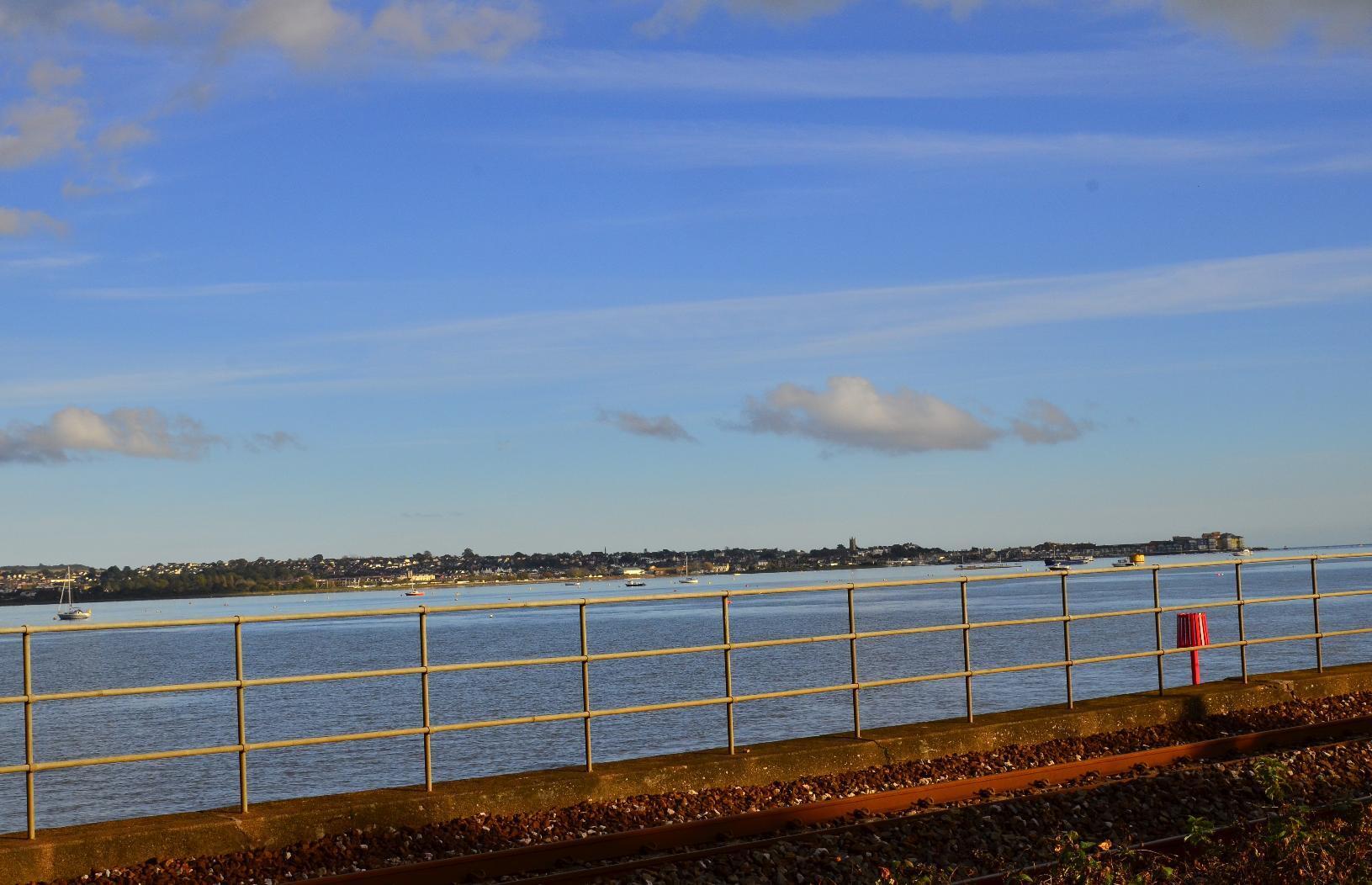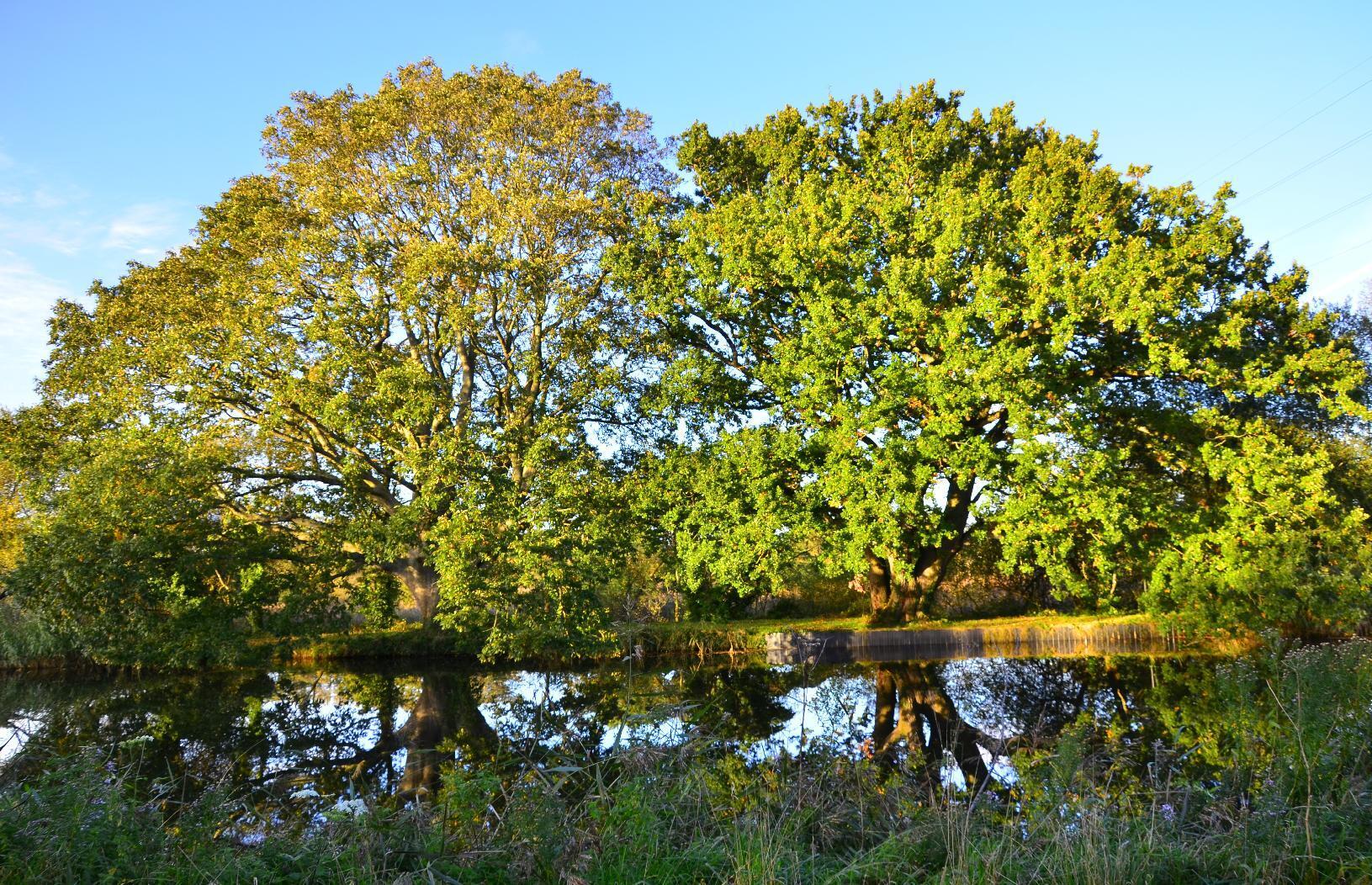Beware, this is going to be a long post...
My standard longer #bike ride is a 30 km round trip to #Starcross, which is #village on the west coast of the #ExeEstuary on the way to #Dawlish. The ride is motor-traffic-free for a goo 80% of the distance. It's also through a lot of #countryside and it's my intention to photograph some of the #trees through all the seasons. However, this set contains a little more for your edification.
Not all trees are alive. For example, this one is a hulk of what was once probably a magnificent specimen.

Most #FarmFields have been replanted after harvesting and even now, shoots are appearing. Meanwhile most #Trees still have their #Foliage.

The #plants and #insects that feed off them are also a food source for these male and female #pheasants.

The village of #Starcross is small but it happens to have a #RailwayStation on the line from #LondonPaddington and #Penzance, though the #IntercityTrains don't usually stop there. This is the last part of the journey for me before I turn and head back homewards at the station itself.

Here is an #IntercityTrain passing. It is run by #GWR or #GreatWesternRailways, which was a company in existence before nationalization and which came back after privatization.

Starting to head back, you can get a good view of the other side of the #Estuary, where the #town of #Exmouth can be seen. There happens to be a nice ferry trip on which you can take your #bike between #Starcross and #Exmouth

The #ExeEstuary has a few #wrecks in it. I presume they are #NavigationHazards but I guess it would prove too expensive to clear the #waterway. Perhaps they provide a #habitat for #MarineLife. Here you can see #Birds (I can't tell whether they are #Cormorants of #Shags).


Next, we come to #PowderhamCastle, which is now a #NationalTrust property. It has a herd of #deer numbering in the hundreds.



The mild #autumn #Sun is seen shining through this #tree's #branches.

More #trees in the grounds of #PowderhamCastle.



At first glance, this may look like a dead #tree but you can see that parts of it still has #foliage.

This #tree, on the other hand, looks completely dead.

This #Pheasant is eyeing the #photographer warily.

This #cycle #bridge was installed not much longer than a decade ago. It makes traversing the #RailwayLine easy. I think there was a #footbridge before this but I'm not sure. A nice addition to #cycling #infrastructure.

From the top of the #bridge, you can see the #barracks of the #RoyalMarines in #Lympstone. Technically, this #photograph is a #Selfie too.

Getting closer to home now, here is the #M5 #Motorway which links #London to #Exeter. This #concrete #viaduct goes over the #Estuary, thankfully leaving much it intact.

Some parts around the #Cyclepath form natural ponds.

Any #journey of moderate length or longer often leaves one #reflecting. Here, you can let the scenery do it.


This #swan was preening on the #ExeterCanal (and so was its #reflection).

Lastly, this is the #bridge over the #RiverExe, which is a sign that my home is a mere 5 km away. A sight that is always welcome. The bridge is old but it a #cyclepath was constructed as an extension to it on the far side, which blends in very nicely with the existing #masonry.

/https%3A%2F%2Ftf-cmsv2-smithsonianmag-media.s3.amazonaws.com%2Ffiler%2F16%2F20%2F16206b6f-a54a-4cc7-ad4d-ac296f8ee751%2Fistock-176129484.jpg)

